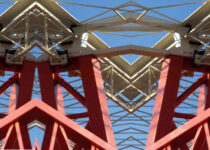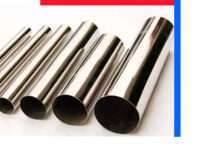Scaffolding Procurement Guide 2025 – Get it Right the First Time.

Scaffolding is, undoubtedly, one of the most essential elements on any construction site. Crucially, it provides access, stability, and, above all, safety. Yet, Scaffolding Procurement of the right system isn’t as straightforward as it seems. Indeed, with multiple standards, material grades, and compliance requirements across the GCC and international markets, procurement teams consequently face complex choices.
At SPAR Steel Industries, therefore, we developed this guide to simplify the process. Specifically, it outlines key specifications, global standards, and best practices to help engineers, contractors, and buyers make informed decisions, thus ensuring every project meets both safety and performance expectations.
Understanding Scaffolding Systems for Scaffolding Procurement
Procuring the right scaffolding system is not just about design or cost; rather, it’s about meeting global safety, material, and performance standards. Whether you’re working on a GCC infrastructure project or an international development, each system must comply with recognized standards such as BS EN, OSHA, and owner-specific requirements like Saudi Aramco GI 8.001 and ADNOC Codes of Practice.
For clarity, the table below compares the three main scaffolding systems used worldwide, thereby outlining their structure, specifications, applications, and compliance benchmarks.
| System | System Description | Key Features | Technical Specs | Best For | Compliance / Standards |
| Cuplock (SP-LOK) | Modular system with vertical standards and cup-joint nodes spaced at 500 mm. | • Quick assembly, no loose fittings • Strong, uniform structure • Ideal for large, repetitive layouts | • Node spacing: 500 mm • Tube: 48.3 mm OD (3.2 – 4.0 mm thick) • Material: S355 / Q345 steel • Finish: Hot-dip galvanized | Façade works, slab formwork, access towers, shoring | BS EN 12811 / EN 10219 |
| Ringlock (SP-RING) | Rosette-based modular system allowing multiple connection angles. | • High flexibility for complex shapes • Superior load capacity • Supports stairs, decks, cantilevers | • 48.3 mm OD tube • Material: Structural steel • Finish: Hot-dip galvanized • Connection: Rosette-wedge | Bridges, plants, refineries, irregular geometries | EN 12810 / OSHA 1926 |
| Tube & Fittings | Traditional system using 48.3 mm steel tubes joined by couplers. | • Maximum design flexibility • Widely available, low cost • Ideal for custom or repair work | • Tube: 48.3 mm OD (3.2 – 4.0 mm thick) • Couplers: EN 74 / BS 1139 • Finish: Hot-dip galvanized | Refurbishment, maintenance, irregular layouts | BS 1139 / EN 74 / EN 10219 / Aramco GI 8.001 / ADNOC COP |
Key Procurement Checks for Procuring Scaffolding
| Item | What to Verify |
|---|---|
| System Type | Cuplock, Ringlock, or Tube & Fittings |
| Tube Specification | 48.3 mm OD, correct wall thickness, EN 10219 material certificate |
| Material Grade | S355 / Q345 or equivalent |
| Finish | Hot-dip galvanized, with coating certificate |
| Load Data | Certified load tables and test reports |
| Compliance | EN / BS / OSHA / Aramco / ADNOC documentation |
| Accessories | Couplers, ledgers, base plates, guardrails, toe boards |
| QA/QC | Mill certificates, inspection reports, and erection manual |
Global Scaffolding Standards and Compliance Requirements for Scaffolding Procurement
Choosing scaffolding means, fundamentally, aligning with international and owner-specific standards for quality and safety.
- Owner Standards (Aramco, SABIC, ADNOC): Significantly, these standards override general requirements and define mandatory site-specific procedures, inspection protocols, and personnel certification.
- American Standards (ANSI, OSHA): In addition, these systems define minimum safety factors and set requirements for worker safety and platform design.
- British/European & Indian Standards (BS, EN, IS): Furthermore, these frameworks define the quality, material specifications, and dimensional accuracy of the scaffold components (tubes, couplers, system performance).

Material Grades & Mechanical Properties for Scaffolding Procurement
Safety, strength, and lifespan of any scaffolding system depend directly on the quality of its materials. Consequently, using the right grade of steel and surface protection ensures the structure performs reliably under load, weather exposure, and repeated use.
Steel Grades Used
SPAR Steel Industries manufactures scaffolding tubes and components using high-strength structural steel that meets international standards:
| Standard | Grade | Yield Strength (Min.) | Tensile Strength (Min.) | Typical Use |
|---|---|---|---|---|
| EN 10219 | S355J2H | 355 MPa | 510 MPa | European standard for cold-formed hollow sections used in scaffolding tubes and standards. |
| ASTM A500 | Grade B | 317 MPa | 400 MPa | North American standard for welded and seamless carbon steel structural tubing. Common in industrial and oil & gas applications. |
Why it matters:
- Higher yield strength means the tube resists bending and buckling under heavy loads.
- Consistent mechanical properties ensure uniform performance across batches.
- Certified materials (with mill test certificates) prove compliance with project and international standards such as BS EN 12811, EN 10219, and ASTM A500.
Owner-Specific Requirements (ARAMCO / SABIC / ADNOC)
In the GCC, major industrial clients such as Saudi Aramco, SABIC, and ADNOC enforce their own scaffolding standards. Therefore, these requirements frequently exceed international codes such as BS EN 12811, EN 10219, or ASTM A500, and are mandatory for all scaffolding materials and systems used on their sites.
Most Primary goals are, after all, to ensure maximum safety, full material traceability, and long-term structural reliability in high-risk environments such as refineries, petrochemical plants, and offshore facilities.
| Parameter | Saudi Aramco | SABIC | ADNOC |
|---|---|---|---|
| Reference Standard | GI 8.001 – Scaffolding | SES E04-S01 – Structural & Scaffolding Materials | COP V4-05 – Scaffolding Safety |
| Tube Standard | ASTM A500 Grade B or higher | EN 10219 S355J2H | BS 1139 / BS EN 12811 |
| Minimum Wall Thickness | ≥ 3.2 mm | 3.2–4.0 mm | 3.2–4.0 mm |
| Material Finish | Hot-dip galvanized | Hot-dip galvanized (70–85 μm coating) | Hot-dip galvanized (mandatory) |
| Marking / Embossing | Permanent embossing every 0.5–1.5 m | Manufacturer identification recommended | Batch or system identification required |
| Couplers | SWL (Safe Working Load) test certificates required | EN 74 compliant | EN 74 / BS 1139 compliant |
| Certification Documents | Mill Test Certificates, SWL reports, and QA/QC plan | EN 10204 3.1 Certificates | Inspection reports, training & competency certificates |
| Inspection & Tagging | Periodic inspection by certified scaffold inspectors | Random visual and coating inspections | Mandatory weekly color-coded tagging (green/yellow/red) |
| Guardrails & Safety | As per G.I. 8.001 safety manual | As per the SES site practice | Guardrails 0.91 m – 1.15 m, toe boards required |
| Special Notes | Only certified suppliers accepted; traceability mandatory | Focus on coating quality and documentation | Site approval is required before scaffold use |
Procurement Note
When supplying or installing scaffolding for ARAMCO, SABIC, or ADNOC projects:
- Confirm the system’s material grade, coating, and certificates before dispatch.
- Ensure all test reports, embossing, and inspection records are ready for site verification.
- Never mix uncertified components from different sources — it can lead to rejection during QA/QC audits.
Load, Height, and Wind Design Considerations
Scaffolding performance depends on how it’s designed to handle load, height, and environmental factors.
Moreover, every project must consider the intended working load, site wind conditions, and anchoring design to ensure safety and compliance with international standards.
Load Classifications (per EN 12811-1)
| Load Type | Typical Use | Uniformly Distributed Load (UDL) | Notes |
|---|---|---|---|
| Light-Duty | Inspection, painting, maintenance | 120 kg/m² | Limited tools and materials; one worker per bay |
| Medium-Duty | General construction, cladding, MEP work | 240 kg/m² | Moderate materials and activity; common in industrial projects |
| Heavy-Duty | Masonry, mechanical assembly, heavy repair | 360 kg/m² or higher | High load-bearing areas; reinforced standards and ties required |
Height and Stability
Scaffold height is governed by both structural stability and base foundation quality.
- Free-standing scaffolds are usually limited to 4 times the minimum base width unless tied to a structure.
- Ties or anchors must be installed at every 4 meters vertically and 6 meters horizontally (typical rule per EN 12811 and Aramco GI 8.001).
- Additional ledger bracing or buttresses are required for tall or narrow scaffolds.
Wind Load Design
Wind load calculations follow EN 1991-1-4 (Eurocode) or SAES-A-112 (Saudi Aramco) standards:
- Basic design wind speed typically ranges from 30–45 m/s, depending on project location.
- For exposed or coastal areas, consider increased safety factors and reinforced ties.
- Sheeted or netted scaffolds significantly increase wind pressure and must be re-evaluated by a qualified design engineer.
Practical Guidelines
- Always verify the design load class before assembling.
- Use certified tie anchors and avoid over-reliance on friction or clamps alone.
- Conduct engineer approval for scaffolds exceeding 20 meters in height or located in high-wind zones.
- Maintain as-built scaffolding drawings for the client’s safety file or QA documentation.
Scaffolding Surface Finishes
| Coating Type | Thickness (μm) | Primary Use | Protection Level |
| Hot-Dip Galvanized | 70 – 85 | Oil/Gas, Marine, Long-Term Projects (High-Corrosion Environments) | Highest. Provides a thick, sacrificial zinc layer for decades of use. |
| Pre-Galvanized | 15 – 25 | Short-Term/Light Construction (Low-Corrosion Environments) | Moderate. Zinc coating is applied to the steel strip before forming, vulnerable at the cut ends. |
| Painted | Varies | General Construction Sites | Basic. Provides aesthetic and minimal corrosion resistance; requires frequent maintenance. |
Quality Assurance and Testing used for Scaffolding Procurement
SPAR Key Testing
| Test | Standard | Purpose (What it Verifies) |
| Raw Material | EN 10219 / ASTM A500 | Confirms the chemical composition and mechanical properties of the steel tube/pipe used. |
| Tensile | ASTM A370 | Measures the material’s strength and yield point (how much stress it can handle before permanently deforming). |
| Flattening | (Internal QA) | Checks the weld integrity and ductility of the steel tube body. |
| Slip Test | EN 74 | Verifies the load-bearing capacity of couplers/clamps, ensuring they won’t slip under the designed load. |
| Galvanizing | EN ISO 1461 | Confirms the corrosion protection coating thickness and adhesion. |
A clear solution is SPAR Steel Industries. Specifically, as a UAE-based manufacturer with an in-house 3” ERW Tube Mill and automated systems, SPAR offers total quality control, backed by certifications like ISO 9001, CE, and EN 1090. In practice, this ensures your project receives fully compliant, reliable products.
Ultimately, therefore, this comprehensive Scaffolding Procurement Guide serves as the essential resource, equipping every reader, from beginner buyer to veteran engineer, with the verified standards and specifications needed to ensure safe, compliant, and cost-effective projects.
For this reason, and for certified scaffolding excellence and dedicated regional supply across the UAE, KSA, Oman, Qatar, and India, contact the experts: SPAR Steel Industries LLC, Ras Al Khaimah, United Arab Emirates.
Email: info@sparsteel.com | Web: www.sparsteel.com.



